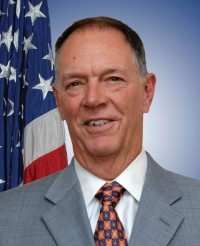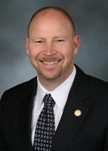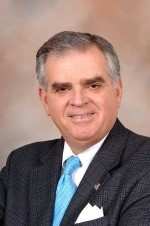A Rash Of Controllers Found Sleeping On The Job Prompts The
Move
 FAA Administrator Randy Babbitt
(pictured) is prohibiting scheduling practices that have been
identified as those most likely to result in air traffic controller
fatigue. The changes are in effect as of Monday morning.
FAA Administrator Randy Babbitt
(pictured) is prohibiting scheduling practices that have been
identified as those most likely to result in air traffic controller
fatigue. The changes are in effect as of Monday morning.
"We are taking swift action to ensure the safety of our aviation
system," said Transportation Secretary Ray LaHood. "There is no
excuse for air traffic controllers to be sleeping on the job. We
will do everything we can to put an end to this."
The planned changes to air traffic controller scheduling
practices will allow controllers more time for rest between shifts.
"We expect controllers to come to work rested and ready to work and
take personal responsibility for safety in the control towers. We
have zero tolerance for sleeping on the job," said Secretary of
Transportation Ray LaHood. "Safety is our top priority and we will
continue to make whatever changes are necessary."
"Research shows us that giving people the chance for even an
additional one hour of rest during critical periods in a schedule
can improve work performance and reduce the potential for fatigue,"
said Babbitt. "Taking advantage of the time you have to rest is
also a professional responsibility."
The new scheduling rules have already been put in place and will
be fully in effect by the end of the week:
- Controllers will now have a minimum of nine hours off between
shifts. Currently they may have as few as eight.
- Controllers will no longer be able to swap shifts unless they
have a minimum of 9 hours off between the last shift they worked
and the one they want to begin.
- Controllers will no longer be able to switch to an unscheduled
midnight shift following a day off.
- FAA managers will schedule their own shifts in a way to ensure
greater coverage in the early morning and late night hours.
 FAA Administrator Babbitt and NATCA
President Paul Rinaldi (pictured) traveled to Atlanta on
Monday, where they began their Call to Action on air traffic
control safety and professionalism meetings. The goal of the Call
to Action is to reinforce the need for all air traffic personnel to
adhere to the highest professional standards.
FAA Administrator Babbitt and NATCA
President Paul Rinaldi (pictured) traveled to Atlanta on
Monday, where they began their Call to Action on air traffic
control safety and professionalism meetings. The goal of the Call
to Action is to reinforce the need for all air traffic personnel to
adhere to the highest professional standards.
Over the course of this week, they will visit air traffic
facilities in and around the following cities: Atlanta; Dallas -
Ft. Worth; Kansas City; Chicago; New York; and Washington, DC. The
two will also visit the air traffic control training academy at the
Mike Monroney Aeronautical Center in Oklahoma City.
Senior members of both FAA and NATCA leadership teams will also
be visiting additional FAA facilities nationwide over the next few
weeks. In addition to changes in scheduling practices, the Call to
Action effort will include the development of a fatigue education
program to teach controllers the risks of fatigue and how to avoid
it. The FAA will also commission an independent review of the air
traffic control training curriculum and qualifications to make sure
new controllers are properly prepared.
NATCA will expand its own Professional Standards program
nationwide which focuses on peer-to-peer education for controllers
on how to maintain the highest degree of professional conduct.
The FAA suspended another air traffic controller early Saturday
morning for falling asleep while on duty during the midnight shift
at the Miami Air Route Traffic Control Center. According to a
preliminary review of air traffic tapes, the controller did not
miss any calls from aircraft and there was no operational
impact. Prior to the start of the shift, all controllers were
given a briefing on professionalism and the importance of reporting
to work fit for duty. The incident was reported to a manager
by another controller. There were 12 controllers on duty and
two managers.
Transportation Secretary Ray LaHood and FAA Administrator Randy
Babbitt were briefed on the incident early Saturday by David
Grizzle, acting chief operating officer of the Air Traffic
Organization.
 Last Wednesday, Secretary
LaHood (pictured) and FAA Administrator Babbitt announced
that the FAA would place an additional air traffic controller on
the midnight shift at airport control towers and other facilities
around the country that were staffed with only one controller
during that time.
Last Wednesday, Secretary
LaHood (pictured) and FAA Administrator Babbitt announced
that the FAA would place an additional air traffic controller on
the midnight shift at airport control towers and other facilities
around the country that were staffed with only one controller
during that time.
"NATCA stands in full support of the FAA's immediate steps both
today (Saturday) and last week to address the recent
incidents, including (the) episode at Miami Air Route Traffic
Control Center," said union president Paul Rinaldi in a statement.
"NATCA and the FAA are in agreement that fatigue and scheduling
must be addressed and I applaud and thank Administrator Babbitt for
taking quick and decisive action ... to address a large part
of the problem and implement immediate steps.
"This latest incident earlier today (Saturday) is of great concern,
as it is never acceptable when we don't provide the level of
service expected and required of us on every shift. We take our
responsibilities very seriously and believe fatigue is a
significant factor in these instances. We will continue to work
with the FAA and through our professional standards workgroup to
address the issue. Because there was adequate staffing in this
large regional radar facility at the time, the incident was caught
without any operational impact and no aircraft calls were missed.
This shows that one part of the FAA's plan for addressing this
issue announced last week - adding additional staffing on the
midnight shift at airport towers - was a wise move."
Rinaldi said the union's main focus is upholding our highest
standards of professionalism, and working with the FAA to reduce
the effects of fatigue. "To that end," he said, "the Administrator
has made a smart move ... to prohibit scheduling practices that
have been identified as those most likely to result in air traffic
controller fatigue."
Rinaldi said the guideposts for further action are the
recommendations of the FAA-NATCA joint workforce on fatigue, which
were the result of a year and a half of efforts. They provide
science-based, healthy solutions to reducing controller
fatigue.
 ANN's Daily Aero-Linx (04.13.24)
ANN's Daily Aero-Linx (04.13.24) ANN's Daily Aero-Term (04.13.24): Beyond Visual Line Of Sight (BVLOS)
ANN's Daily Aero-Term (04.13.24): Beyond Visual Line Of Sight (BVLOS) Airborne 04.09.24: SnF24!, Piper-DeltaHawk!, Fisher Update, Junkers
Airborne 04.09.24: SnF24!, Piper-DeltaHawk!, Fisher Update, Junkers Aero-News: Quote of the Day (04.14.24)
Aero-News: Quote of the Day (04.14.24) ANN's Daily Aero-Term (04.14.24): Maximum Authorized Altitude
ANN's Daily Aero-Term (04.14.24): Maximum Authorized Altitude





